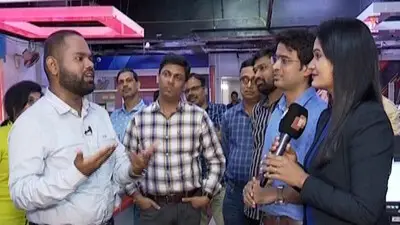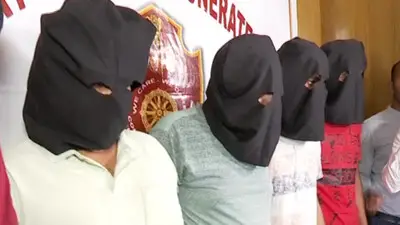Recommended Stories
By Capt. Dibya Shankar Mishra
Spring-summer comes with many delights in India. Holi - the festival of colours, Baisakhi – the glorious harvest festival in north India, Kaalbaishakhi – squally thunder storms that typically occur in the eastern Gangetic plains of Bihar, Jharkhand, Odisha and West Bengal. Kaalbaisakhi has a very special place in the hearts of Odia poets and writers, describing the astounding of beauty of dark clouds; exquisite emotions matching these beautiful clouds hanging low and promising unrestrained destruction. These unexpected showers are extremely helpful to pre-Kharif crops like jute, paddy and a large number of vegetables and fruits. It gives some much desired relief after mid-day heat and quenches the thirsty soil for development of crops. The Basanti Navaratri, Ram Navami coupled with endless local festivals like ‘Jhamu Jaata’, Danda Naacha and Pana Sankranti herald the Odia new year – not to forget the coming of mangoes - the king of all fruits!!
But summer for many is the harbinger of many woes - drying wells, dried ponds and water bodies, non-yielding hand pumps, defunct tube wells, cracking dry land forming fissures on surface, the drudgery of women walking miles to fetch water, little children hobbling along mothers with pots, women fishing water out of small holes on the earth’s surface, collecting muddy water from shallow streams and hyacinth covered water bodies; limited water supply times in urban areas, water shortage, lack of drinking water, ground water depletion and worst of all the out-break of diarrhea, jaundice and other water borne diseases. Questions in the media, television channels going berserk with visuals of people in distress, hounding politicians, administrators and water engineers; radio channels crying foul, answers sought from district administrations, water supply departments, administrators and politicians. All discussions and debates centre around who is to blame; this government or the previous one?
Coming from a lay person in the field of water management like me, my opinion might not be technically correct but I wish to put forth my understanding of the issue based on commonsense. I must also mention that my essay is based on my experience of interacting with the people, listening to their woes, participating in public discourses with experts, politicians, administrators, practitioners and water campaigners. I have come to realise that discussions around water management should not be limited to only efficient use of existing underground water. This viewpoint of water management espouses a limited understanding of the issue and also unfortunately demonstrates an unsustainable approach to dealing with water scarcity. While ‘save water’ is something that we should continue chant every day, we have to start talking about ‘making water’ even in a water affluent state like Odisha. By this I mean there is a need to aggressively refocus our thoughts around re-charging, rejuvenating and replenishing ground water in our state.
Review of good practices on water management shows that small but efficient action can have a long term impact on water availability, especially in water scarce districts in Odisha. This essay suggests some small, tried out actions that have far reaching results. As partners in development, we must focus on doable, practical and high impacting action that can address our concerns. With competing demands on our water resources, it is critical to develop an integrated water management plan at the state level. The plan should assess the demand for water use by sector; agriculture, irrigation, industrial use and domestic requirements. In plain economic terms, this plan should help us calculate how much water we get, how much we use, how much is our requirement and how much is the surplus amount available. This will help the state develop a proper water use plan.
Besides upstream actions, there is also a need to develop local water security plans. In a democracy that emphasizes participation of people, the importance of community participation and responsibility for water use in water scarce areas can hardly be overstated. This essentially presupposes engagement with the people, facilitating development of village water management plan that looks at source protection, including rejuvenation/ recharging, and equitable distribution of water. This requires a paradigm shift in thinking– a move away from water supply mode to joint ownership of water use. Sharing of responsibility among all stakeholders – policy makers, implementers and water users – is a must to tackle water scarcity issues. Preservation, protection and upgradation of traditional water sources like the local springs, chuas and wells has to be undertaken as a statewide strategy for rural areas.There is a need to shun the over-dependence on that one hand pump which suffers many breakdowns due to over-use and look at alternative sources of safe drinking water. This approach will make communities responsible for assessing their own water availability, quality and monitoring of water use. Self-monitoring will also ensure water budgeting and rational use of water. These approaches are process-intensive because they require communication and mobilisation of people, creating awareness among them to take responsibility for their water resources and generating a demand for rational water use.
As a policy maker myself, I see the advantage of having a positive dialogue with civil society organisations, academic institutions and water champions in understanding local issues and arriving at local solutions to problems.The argument that I wish to put forward here is a decentralized approach to development where we see government more as a facilitator than a provider. This is not to suggest that the welfare role of the government should be de-emphasized; it just means that we look upon people as partners in development rather than as recipients of privileges. Water management and watershed initiatives like construction of bunds, tanks, percolation tanks, check dams, plantation and water harvesting structures will obviously remain within the larger domain of the government. Government can also partner with NGOs to implement these projects through local area development plans.
While this would not require an overhaul of the existing structure, a shift in organizational and policy level thinking will have to be introduced. This would require creative reorganization of human resources, a need to introduce multi-disciplinary workers and go beyond a department of just civil engineers. There might be a need for building the capacity of our human resource to reorient them on principles of joint management, ownership and community participation. It is not that Odisha as a state does not have an experience of such partnership initiatives. Initiatives like the Western Odisha Rural Livelihood Projects (WORLP), Odisha Community Tank Management Project (OCTMP) and Pani Panchayat promote many of the principles mentioned here. There is, however, a need to learn from the experiences of these programmes and support the quality implementation of these programmes, which encourage local and context-specific solutions to seemingly large problems.

The writer is the BJD MLA from Junagarh.












